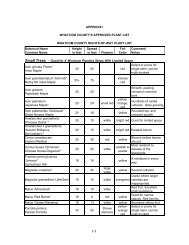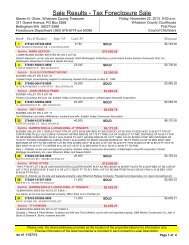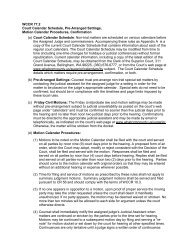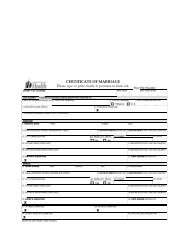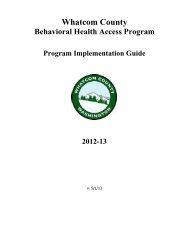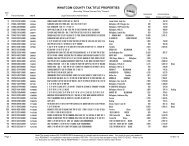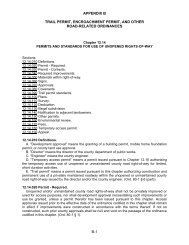Poisonous Plants Booklet - Whatcom County
Poisonous Plants Booklet - Whatcom County
Poisonous Plants Booklet - Whatcom County
Create successful ePaper yourself
Turn your PDF publications into a flip-book with our unique Google optimized e-Paper software.
COMMON<br />
LIVESTOCK<br />
POISONING<br />
PLANTS<br />
OF WHATCOM<br />
COUNTY<br />
PASTURES<br />
BRACKEN FERN<br />
Pteridium aquilinum<br />
Description: Bracken fern, or<br />
western bracken, is a wideranging<br />
native plant that grows in<br />
shaded woodlands, upland pastures,<br />
and recently cleared or<br />
burned land. It is a large fern up<br />
to 4 feet in height. The broad triangle-shaped<br />
leaves grow in<br />
groups of three. Rusty spores are<br />
found on the undersides of the<br />
leaves. It dies back each fall.<br />
Toxicity Rating: Low<br />
Toxic Parts: The spores, leaves, and the roots contain a cumulative poison.<br />
The toxin remains in the plant after drying.<br />
Signs/Symptoms: Bracken fern poisonings<br />
are rare. Horses develop the<br />
signs of bracken fern poisoning over<br />
a 2 to 4 week period. Considerable<br />
quantities of fern must be eaten, either<br />
in the fresh state or as hay. A<br />
disease called "fern staggers" results.<br />
Signs include a staggering gait,<br />
twitching muscles, a weak, fast pulse<br />
and convulsions. Death occurs several<br />
days to weeks after the onset of<br />
symptoms. Cattle, sheep, goats, and pigs can also suffer from bracken poisoning<br />
and can cause blindness.<br />
3



